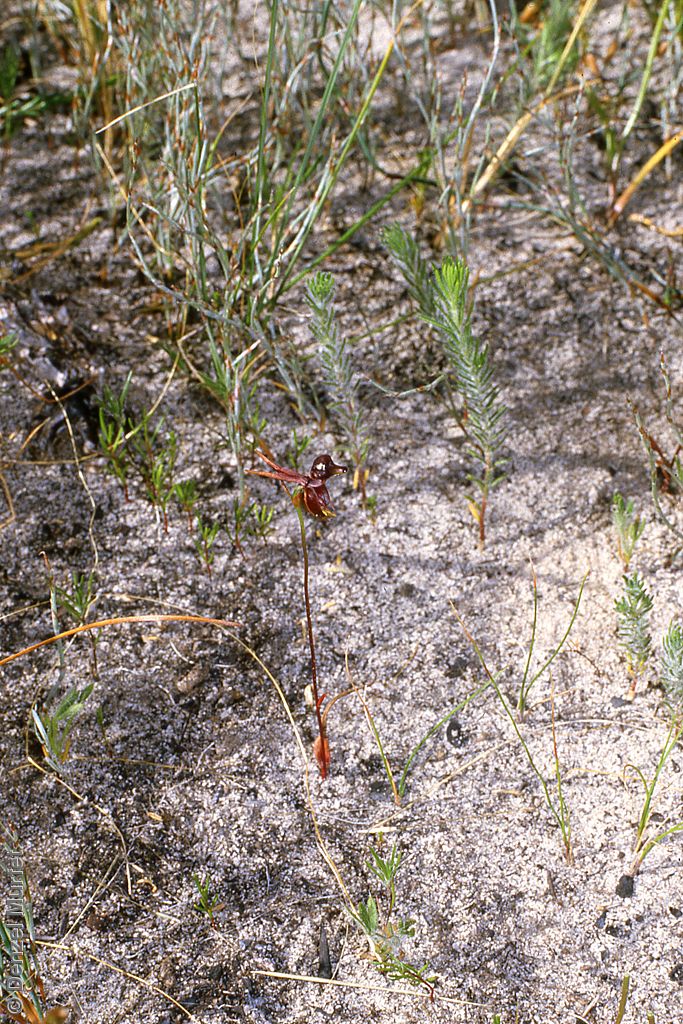
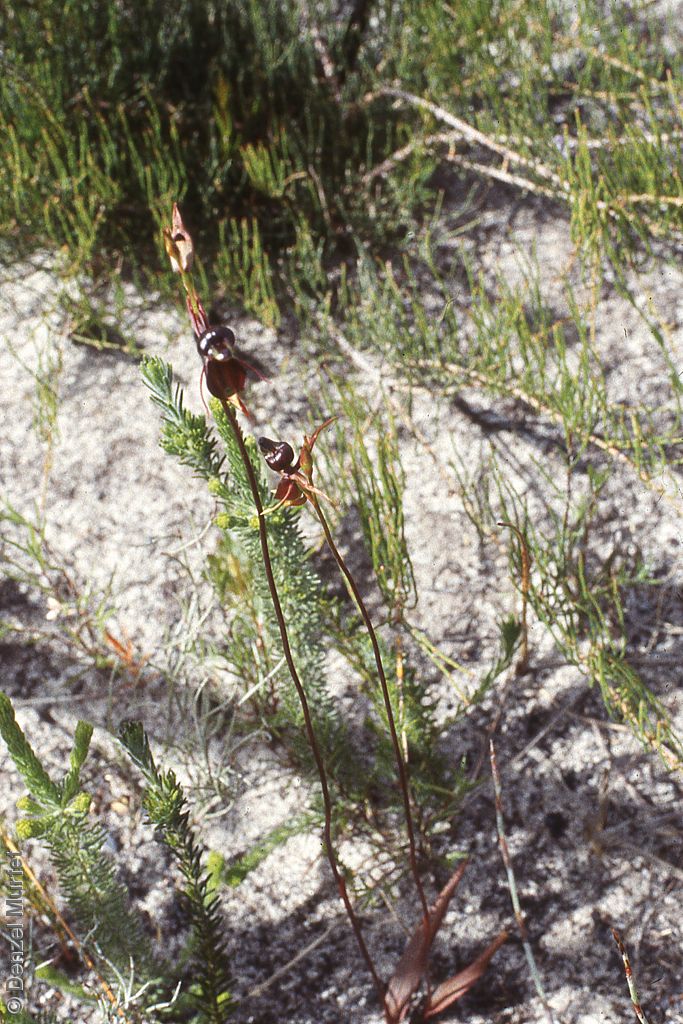
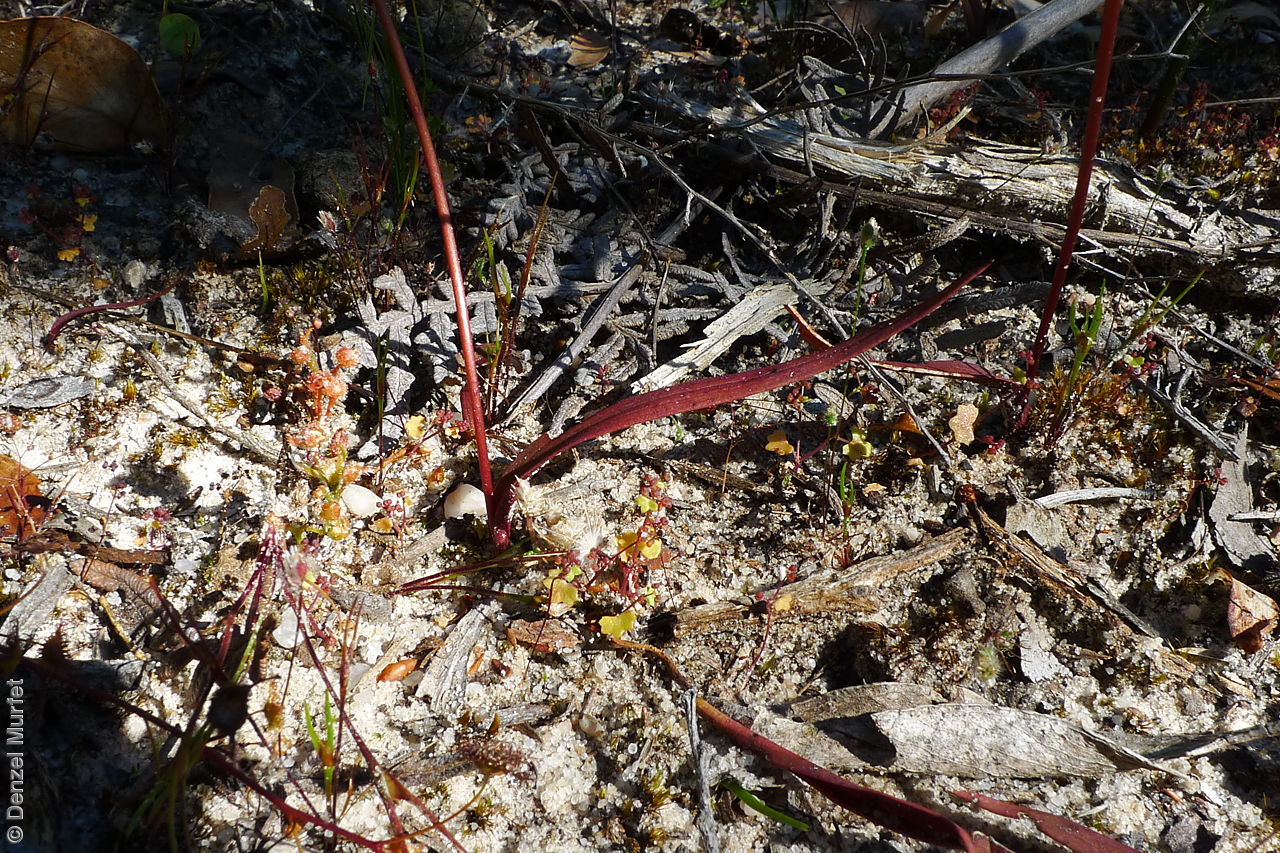
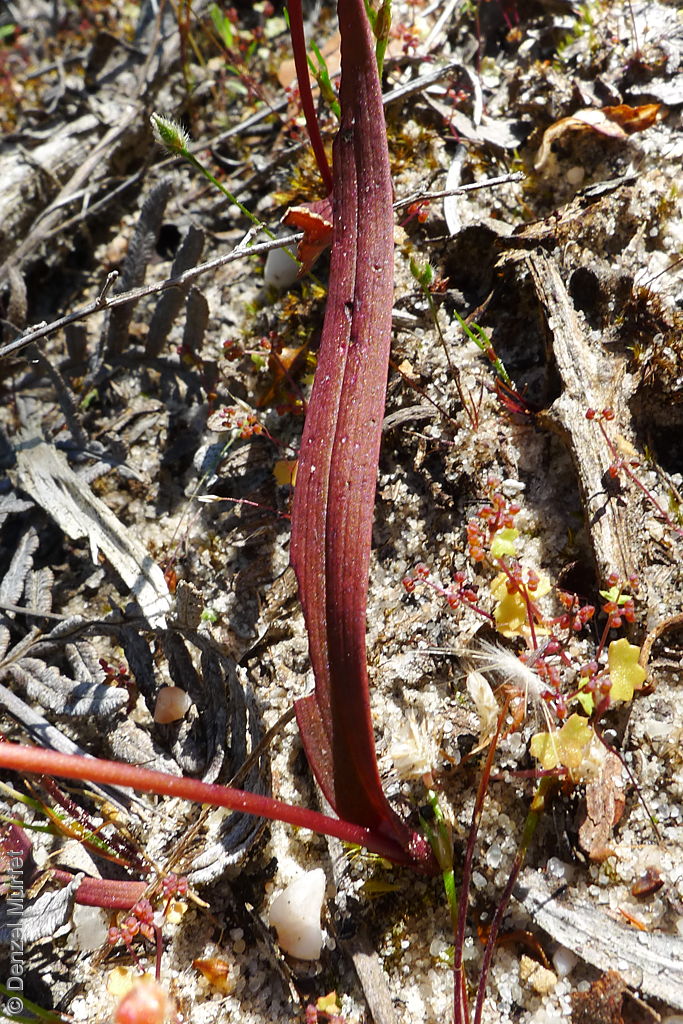
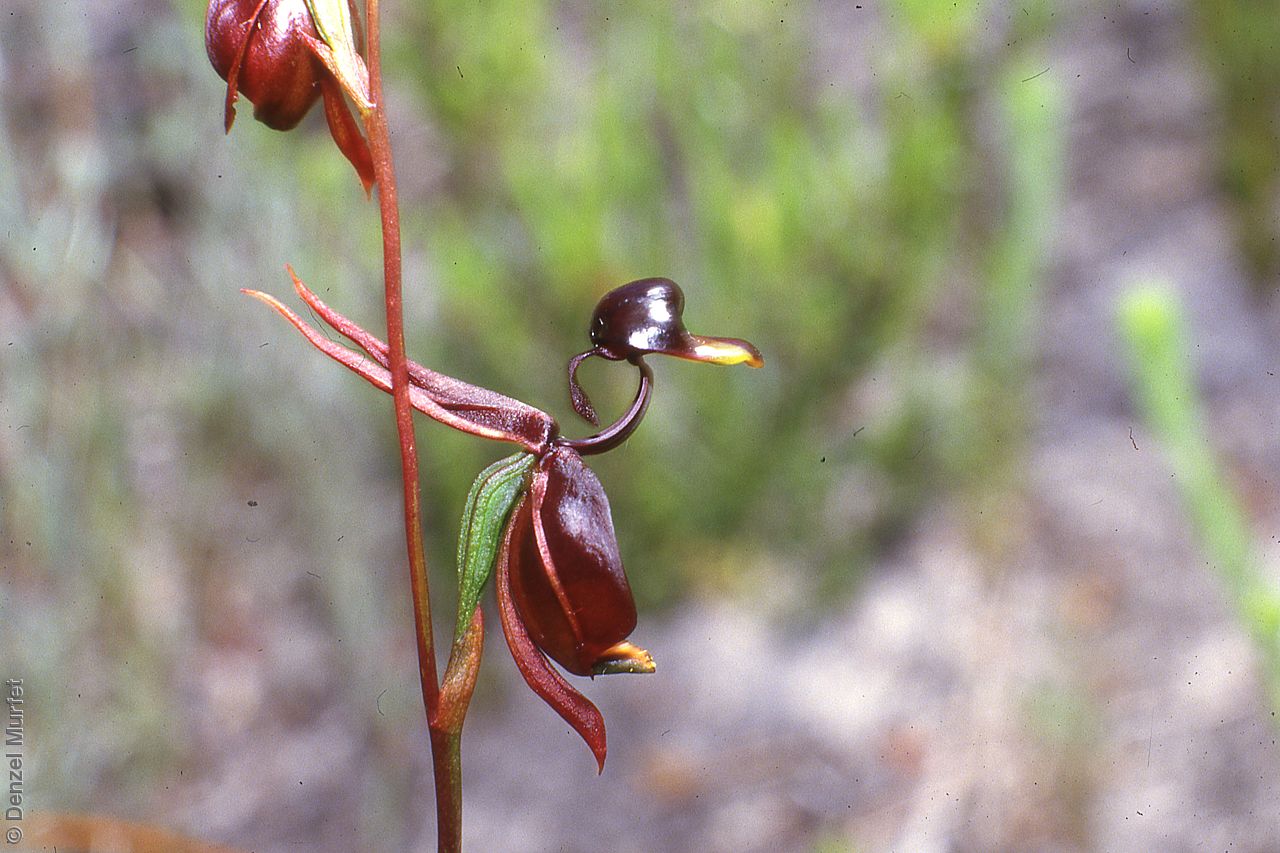
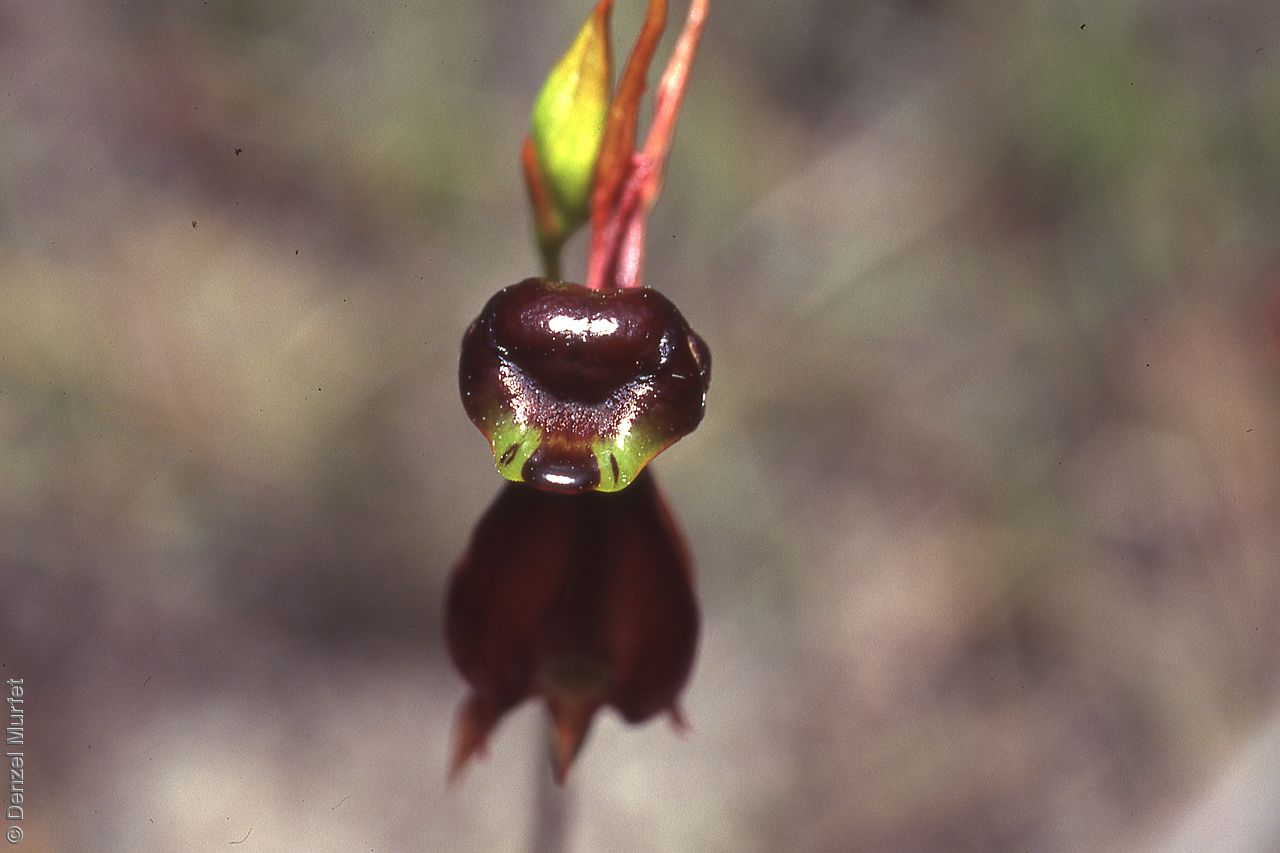
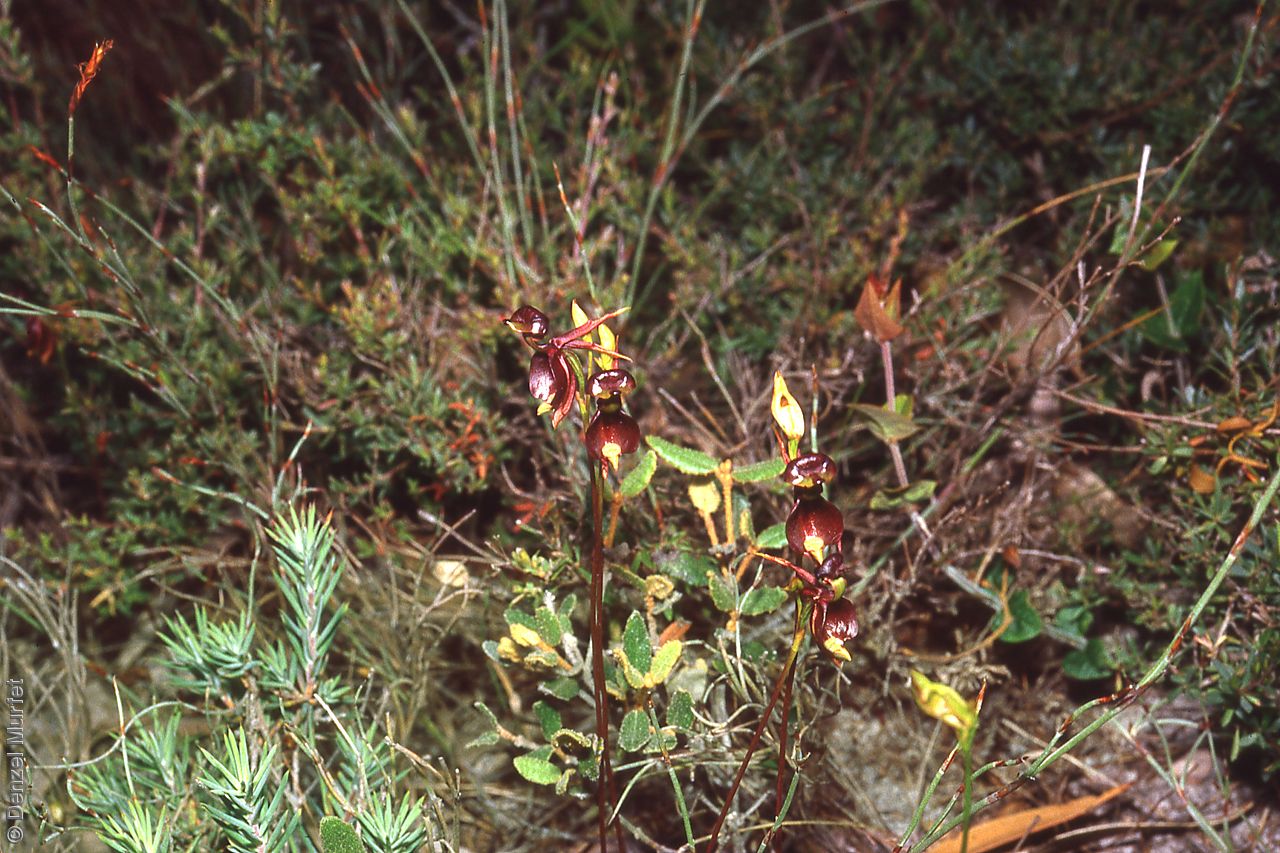
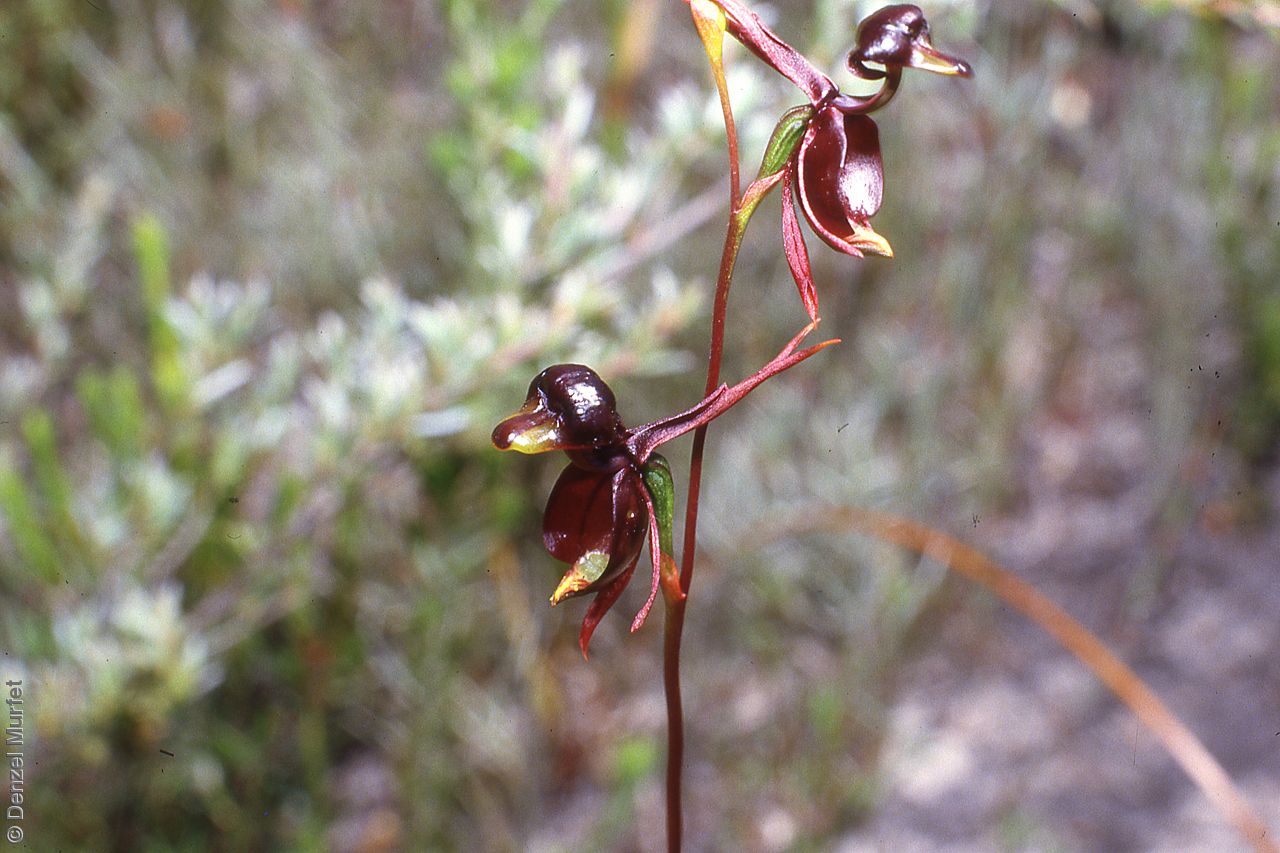
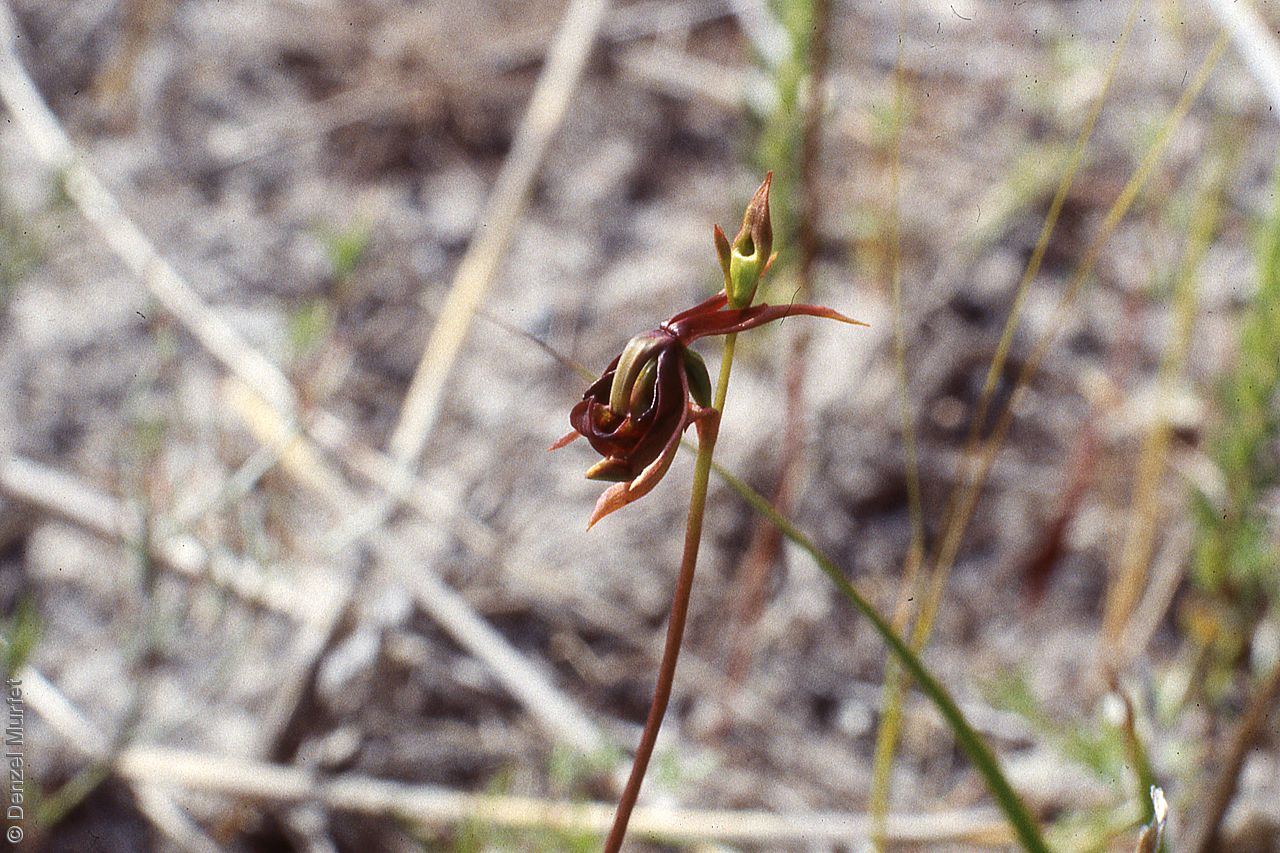
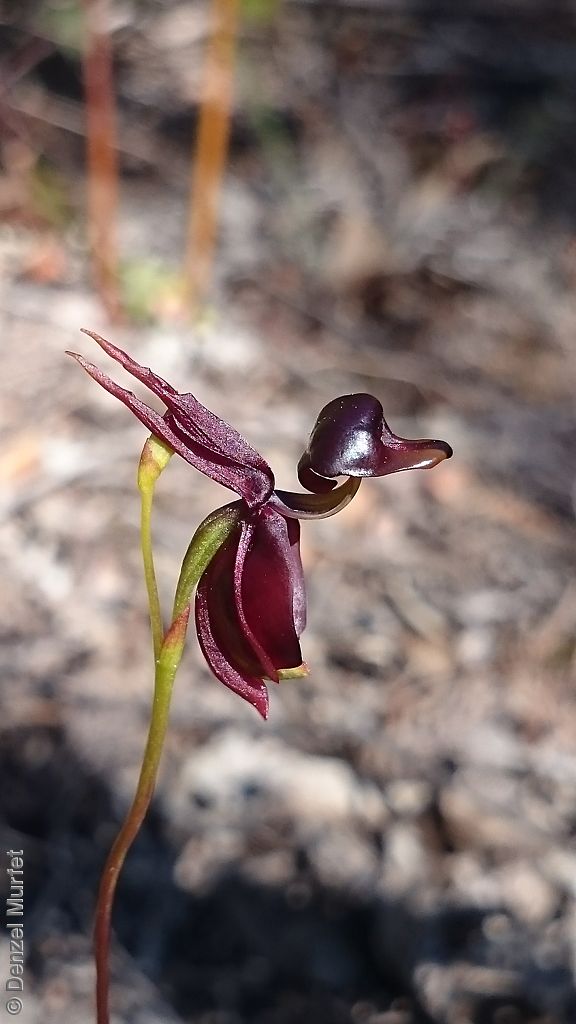
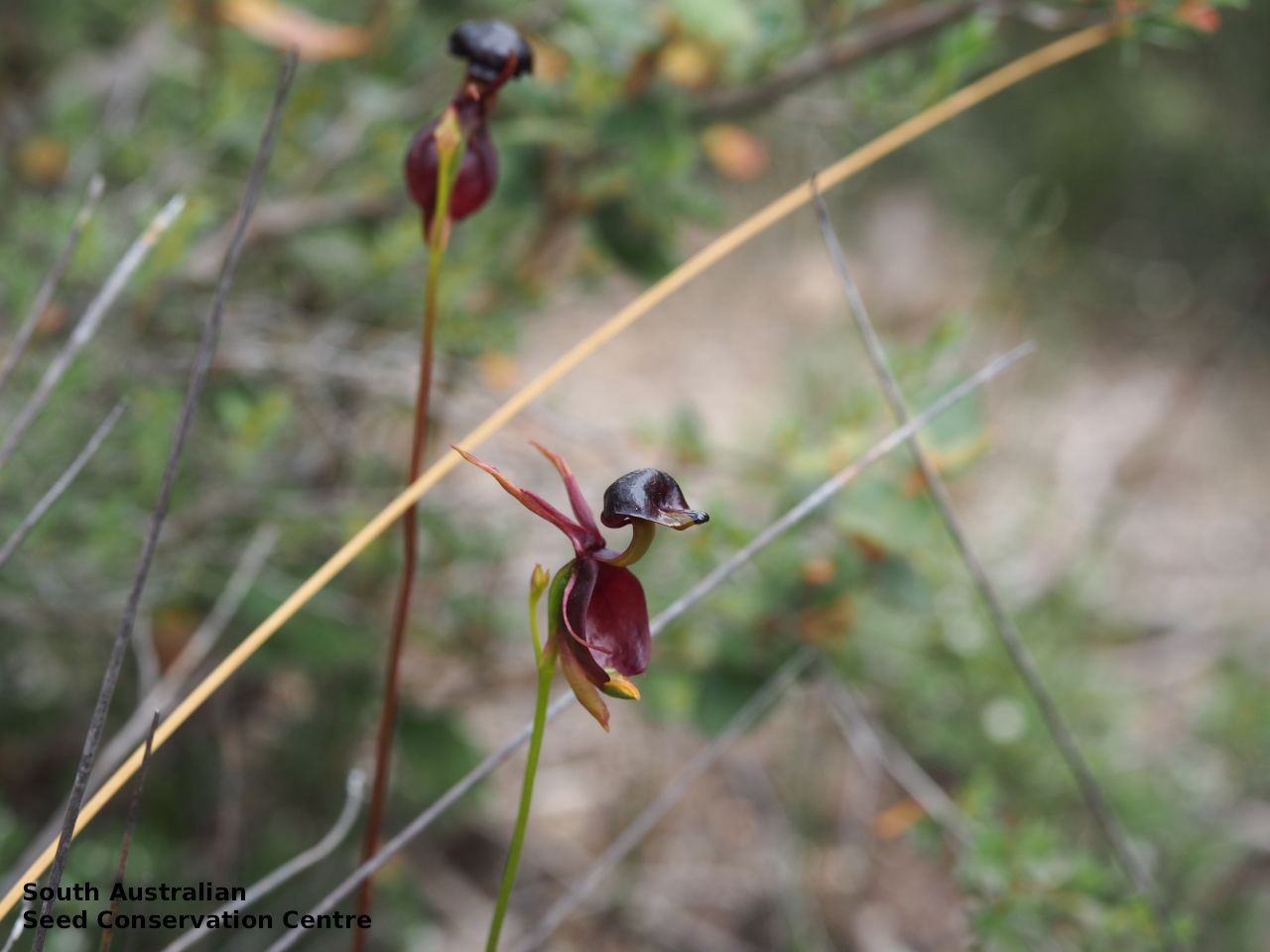
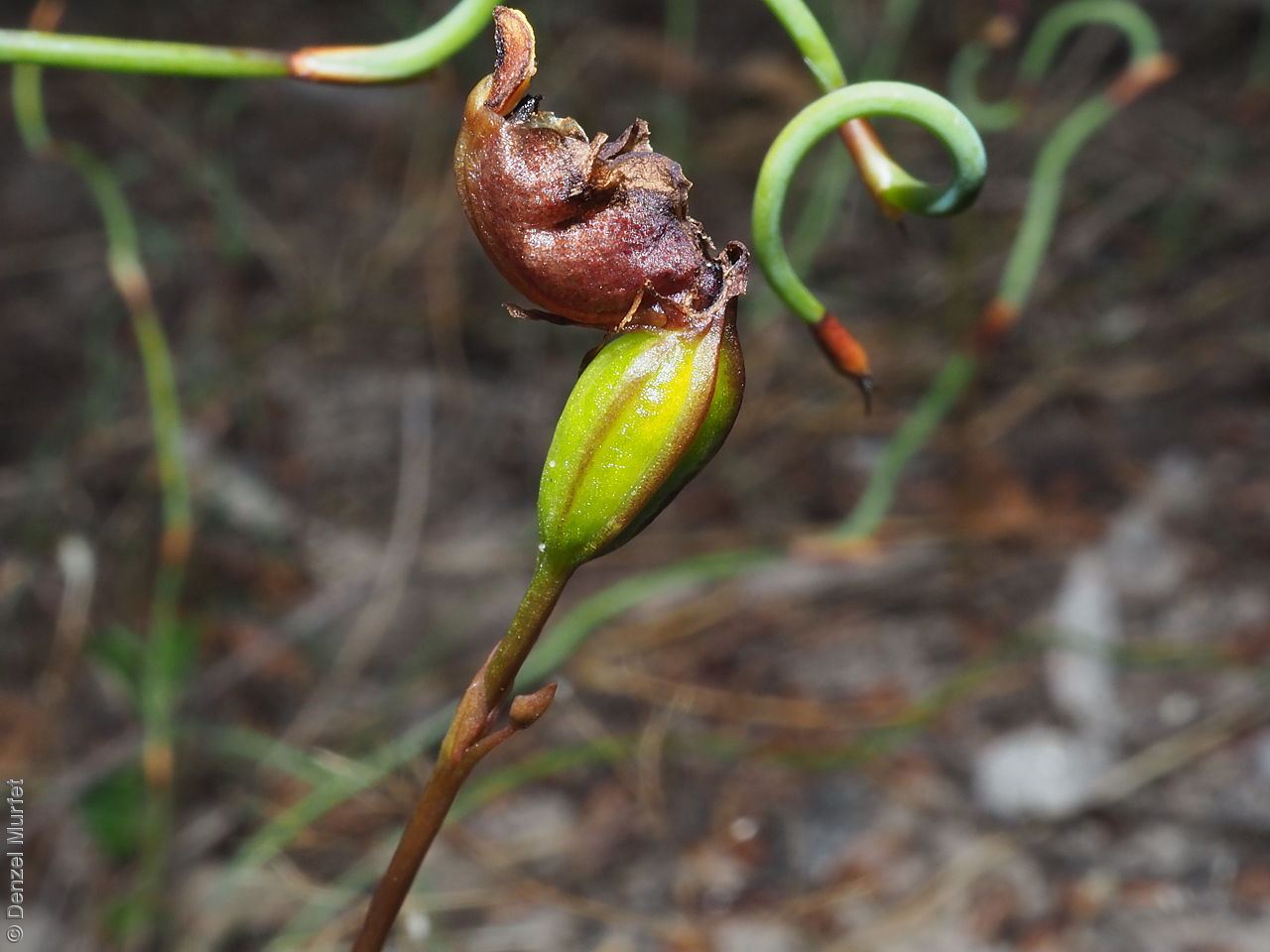
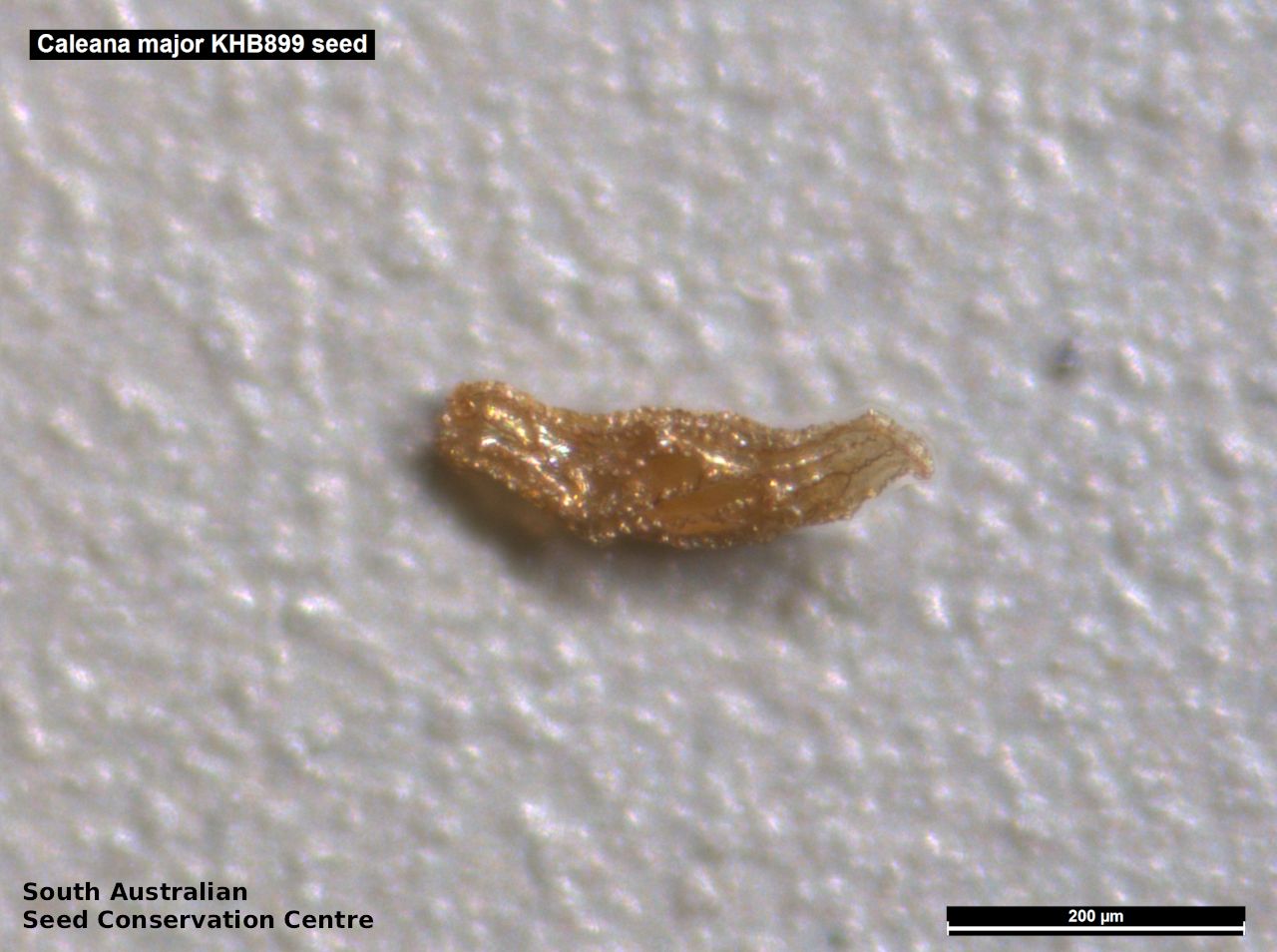
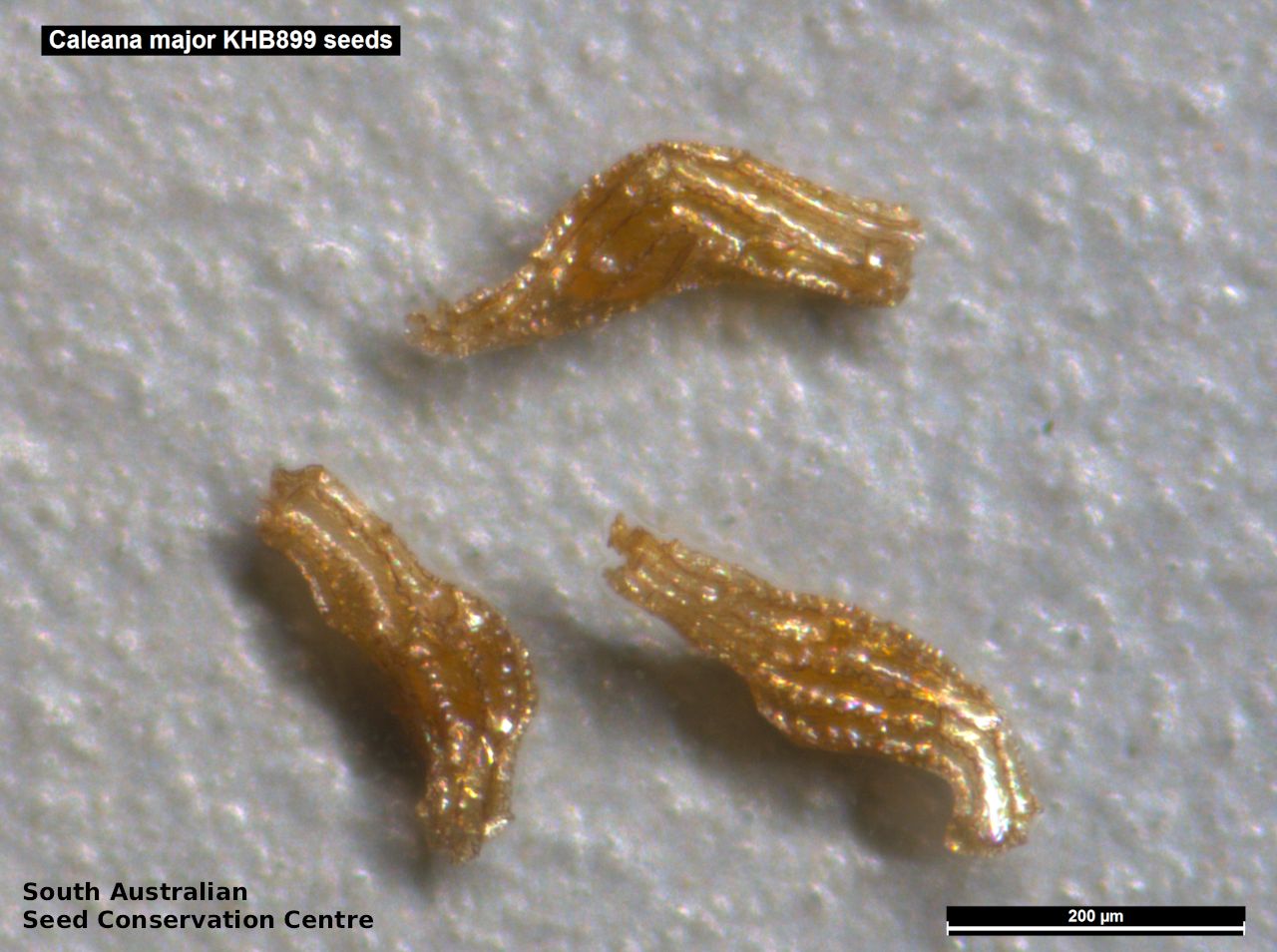


Botanical art
Common names
Large Flying Duck-orchid
Large Duck-orchid
Flying Duck
Etymology
Caleana name in honour of George Caley (1770-1829), a British botanist and collector of New South Wales plants, curator of the St. Vincent Botanic Garden, West Indies and a friend of Robert Brown. Major from Latin meaning great, alluding to the species having the largest flowers of any of the duck orchids.
Distribution and status
Found in the southern Mount Lofty and the South-east in South Australia, growing in open areas on sand and gravelly soil. Also found in Queensland, New South Wales, Victoria and Tasmania. Native. Very rare in South Australia. Common in the other states.
Herbarium regions: Southern Lofty, South Eastern, Green Adelaide
NRM regions: Adelaide and Mount Lofty Ranges, South East
AVH map: SA distribution map (external link)
Plant description
Terrestrial orchid growing to 50 cm tall in flower with a single slender narrow-lanceolate leaf to 12 cm long and 8 mm wide, generally reddish. Flower 1-2 reddish-brown on very slender stalk with a profile resembling a duck in flight. Flowering between October and January. Fruits are brown papery ellipsoid capsule. Seeds are very small orange-brown ellipsoid seed with a long cylindrical translucent brown mesh-like covering.
Seed collection and propagation
Collect seeds between January and February. Collect fat capsules as they start to dry and turn brown. Pods will split and release the seeds quickly and will require monitoring. To increase the chances of collecting mature pods, it is recommended that a small breathable bag (ie. Organza bags) be used to enclose the developing capsules. Place the capsules in a container that will hold fine seeds and leave to dry for a few weeks or until the capsule split. Then carefully hold the capsule and tap it gently to release the seeds. Store the seeds with a desiccant such as dried silica beads or dry rice, in an air tight container in a cool and dry place, refrigerator or in liquid nitrogen. More research is needed to understand the seed germination requirements of Caleana species. Seed germination in orchid species is difficult in the absence of symbiotic mycorrhizal fungi.
| Location | No. of seeds (weight grams) | Number of plants | Date collected | Collection number Collection location | Date stored | % Viability | Storage temperature |
|---|---|---|---|---|---|---|---|
| BGA | 119,000 (0.023 g) | 8 | 25-Oct-2016 | KHB899 Southern Lofty | 1-Nov-2017 | N/C | -80°C |
Number of plants: This is the number of plants from which the seeds were collected.
Collection location: The Herbarium of South Australia's region name.
% Viability: Percentage of filled healthy seeds determined by a cut test or x-ray.